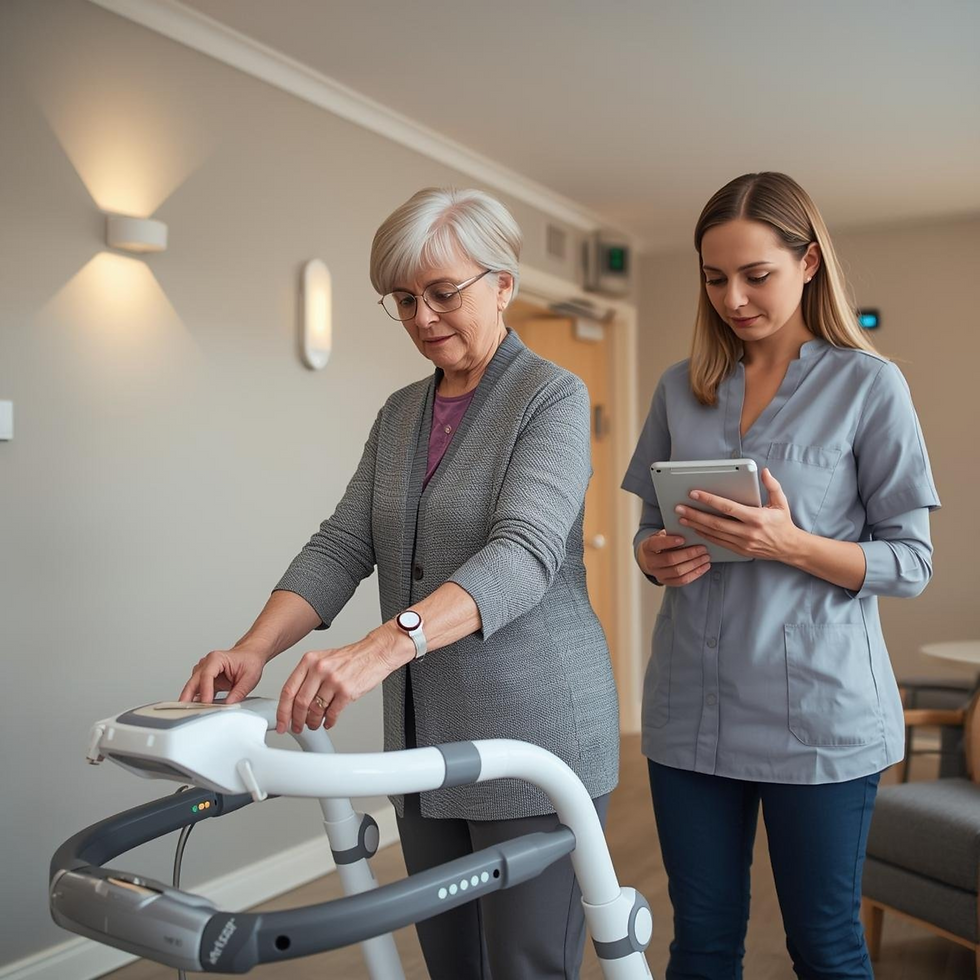What Emerging Technologies in Elderly Care are Most Promising for Fall Prevention
- The ResQUp

- Sep 19
- 2 min read
Several emerging technologies in elderly care are showing strong promise for enhancing fall prevention, including AI-powered risk assessment, wearable fall detection devices, smart home systems, and sensor-integrated environments.[1][2][3][4][5]

AI and Predictive Analytics are at the Forefront of Emerging Technologies in Elderly Care
Artificial intelligence is increasingly used to analyze movement and health data, predict individual fall risk, and deliver customizable reminders and interventions. These AI systems can recognize high-risk movement patterns, monitor medication adherence, and prompt preventive exercises or safety checks, ensuring more personalized and timely support.[2][1]
Wearable Fall Detection Devices
Modern wearables such as smartwatches and medical alert pendants can automatically detect falls using accelerometers and gyroscopes. Devices like Medical Guardian MGMini Lite and ADT On-the-Go offer instant emergency alerts and GPS location tracking, enabling faster response and assistance.[3][6]
Smart Home Integration
Connected home systems use technologies like motion sensors, automated lighting, smart locks, and voice assistants (Alexa, Google Home) to reduce common fall risks. Features such as automatic lighting, real-time monitoring, and remote access to emergency notifications help improve both independence and safety.[4][7]
Sensor-Enabled Flooring
Innovative smart floors use pressure and motion sensors to monitor walking patterns and identify instability or high-risk movements. Such environments can automatically alert caregivers or trigger mobility interventions, and even guide rehabilitation by tracking progress.[5]
Virtual Reality and Exergames
VR platforms and exergaming systems engage older adults in interactive balance, strength, and agility workouts, improving muscle function and stability while also making exercise more enjoyable. These solutions offer safe, adaptable programs that target mobility—a key factor in fall prevention.[1][2]
Mobile Health (mHealth) Apps
Mobile health technologies provide remote monitoring, education, and telehealth access, making it easier for seniors and caregivers to track wellness, access professional guidance, and adhere to individualized fall prevention plans.[8]
In summary: AI-driven analytics, wearable detection devices, smart environments, sensor-integrated flooring, VR-based exercise, and mHealth platforms represent the most promising new technologies for proactive, effective fall prevention in elderly care.[2][3][4][5][8][1]
Blog-Fall-Prevention-Awareness-Week-2025-36.docx




Comments